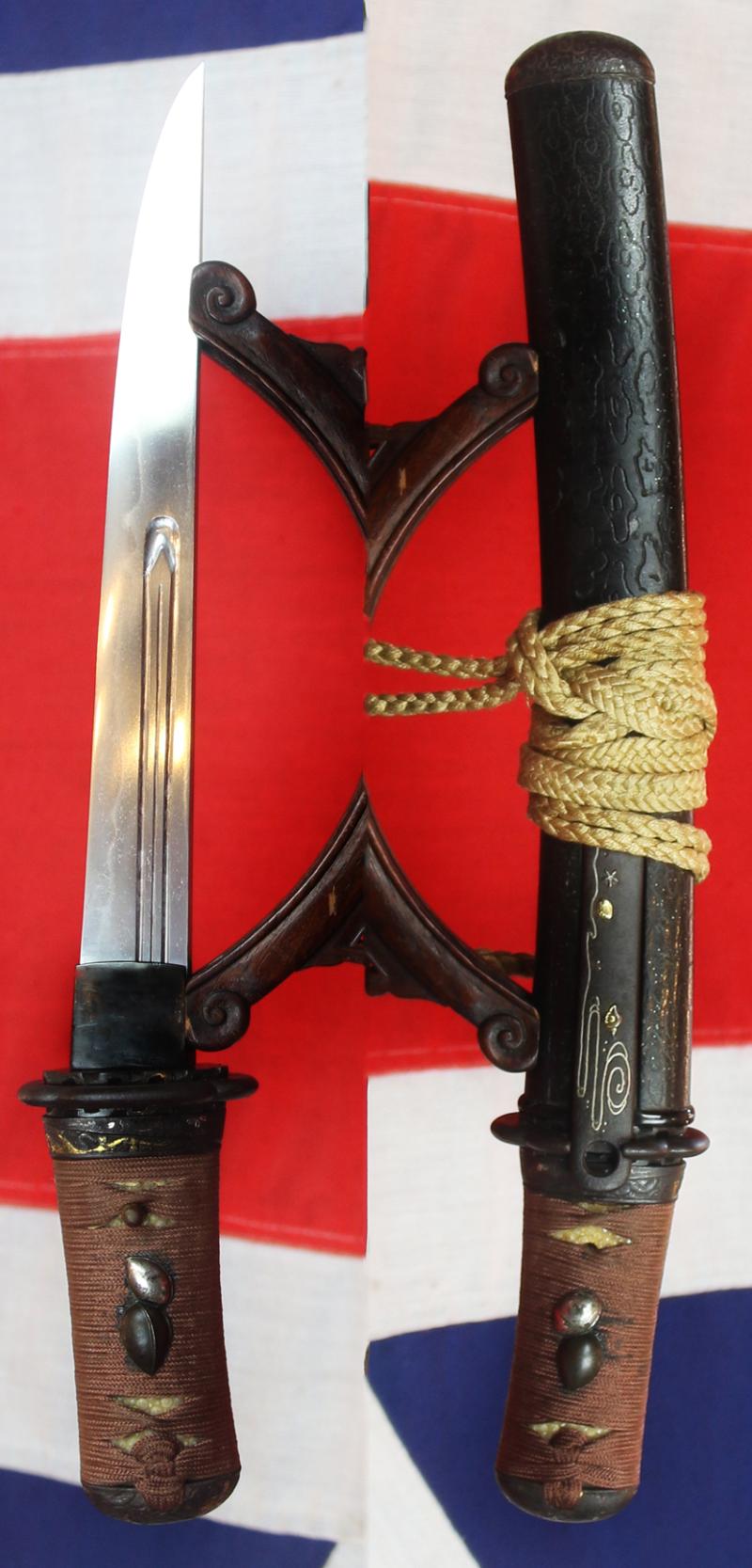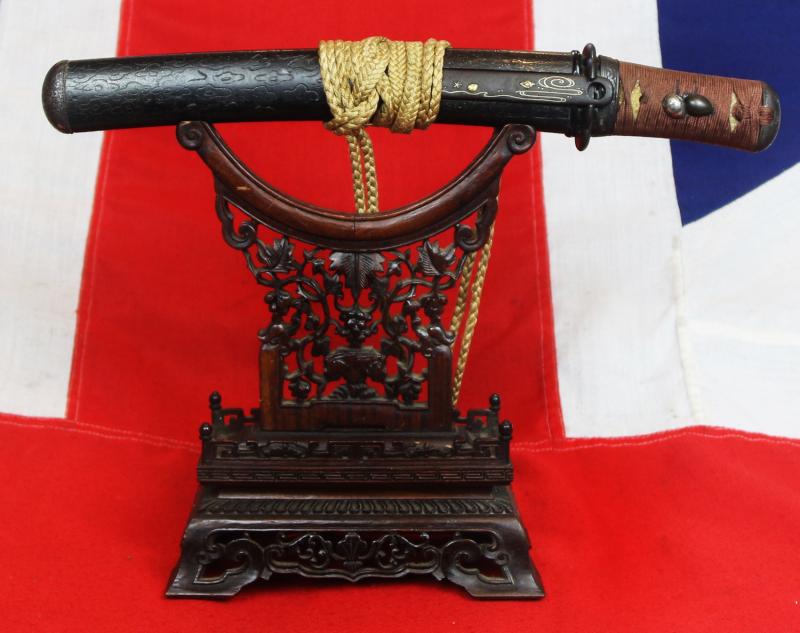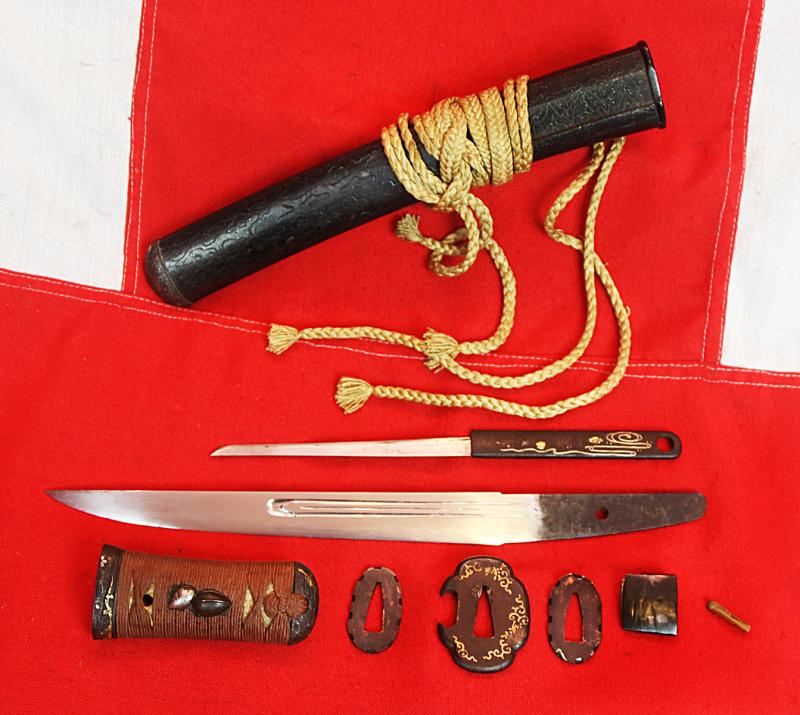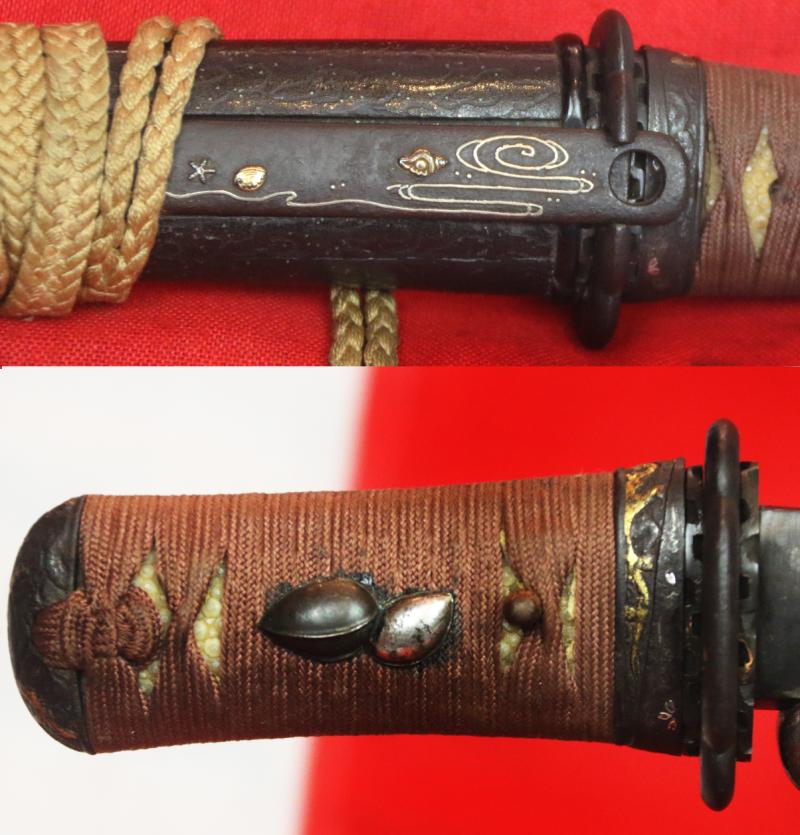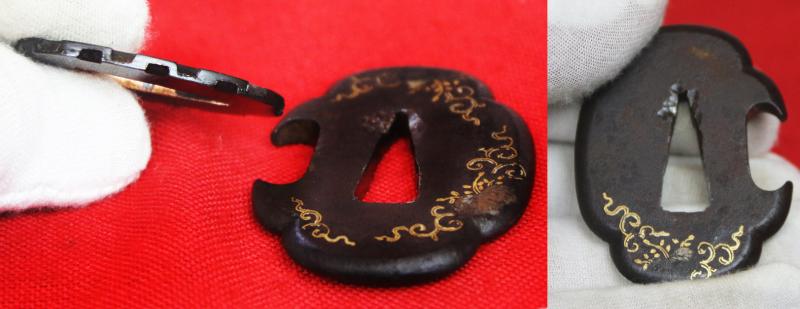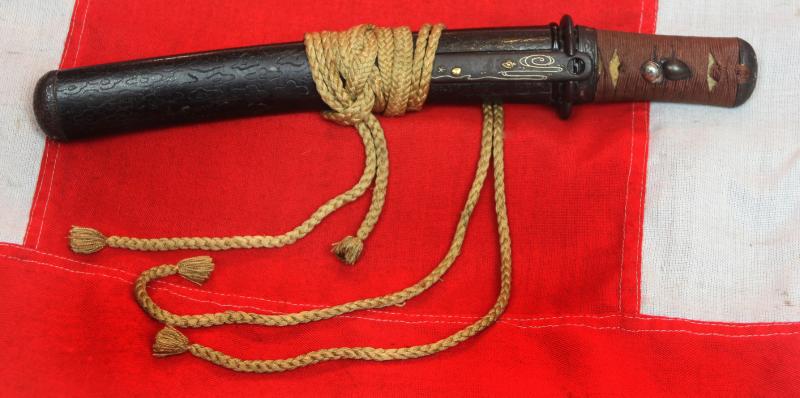An Exceptionally Beautiful & Fine, Koto Period, Armour and Helmet Piercing Samurai Yoroi-Doshi Tanto, With All Original Edo Koshirae Fittings Shakudo, Iron Tettsu, Silver, and Gold
Circa 1580. With two hi horimono on one side and a ken blade horimono suken (素剣) on the opposite side {omote} the side of the sword away from the body as it is worn. The opposite side is called the ura or back.
Beautiful notare hamon, strong and wide kasane thickness of the blade for the required strength to penetrate iron armour and helmet skull. Superb fuchi kashira higo school in low relief takebori of gold inlay on iron. Urushi black lacquer saya, with carved buffalo horn koiguchi, the lacquer is lightly carved with a decor of clouds throughout, with speckles of abilone shell to simulate stars behind the clouds. shakudo and silvered menuki of bean pods. Iron kogatana with iron kozuka inlaid with gold stars and seashells with stylized clouds, iron tettsu tsuba with inlay of gold tendrils and silver aoi leaf, and a pair of crenellated form seppa.Very fine shakudo habaki
The yoroi-doshi "armour piercer" or "mail piercer" were one of the traditionally made Japanese swords (nihonto) that were worn by the samurai class as a weapon in feudal Japan. The yoroi-doshi is an extra thick tanto, dagger , which appeared in the Sengoku period (late Muromachi). The yoroi-doshi was made for piercing armour and for stabbing while grappling in close quarters. The weapon ranged in size from 20 cm to 24 cm, but some examples could be under 15 cm, with a "tapering mihaba, iori-mune, thick kasane at the bottom, and thin kasane at the top and occasionally moroha-zukuri construction". The motogasane (blade thickness) at the hamachi (the notch at the beginning of the cutting edge) can be a third to up to a half-inch thick, which is characteristic of the yoroi-doshi. The extra thickness at the spine of the blade distinguishes the yoroi-doshi from a standard tanto blade.
Yoroi-doshi were worn inside the belt on the back or on the right side with the hilt toward the front and the edge upward. Due to being worn on the right, the blade would have been drawn using the left hand, giving rise to the alternate name of metezashi or "horse-hand (i.e. rein-hand, i.e. left-hand) blade".
23 cm blade tsuba to tip
Code: 25302

